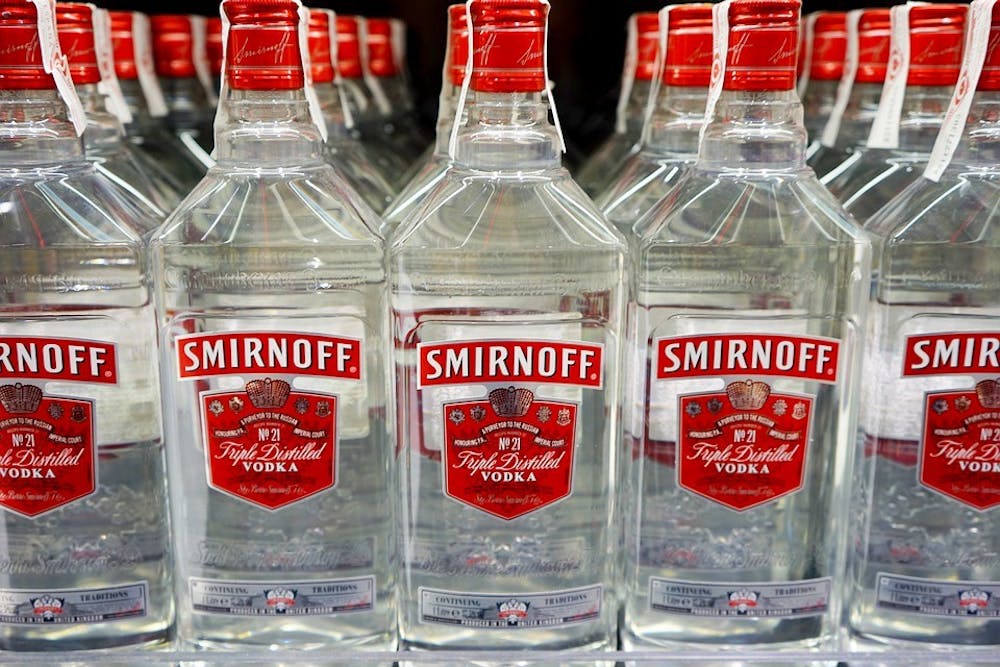Liquor law violations by U.Va. students dropped by 30.5 percent last year, according to the Clery Act report recently published by the University. In 2016, alcohol violations referred for disciplinary action totalled 599. In the recently released report, violations in 2017 numbered 416.
Every three years, the Clery Act requires colleges and universities to publish an Annual Fire Safety and Security report, documenting alcohol law violations and other crime statistics, security policies and procedural changes over the past three calendar years.
While liquor law violations — any violation of state or local law surrounding alcohol use or distribution — referred for disciplinary actions have dropped significantly, arrests made following violations have remained consistent with previous years. In 2015 and 2016, 52 and 54 arrests were made, respectively. In 2017, arrests totalled 52 again.
“We generally do not refer a first time underage possession of alcohol arrest to the [University Judiciary Committee] absent additional circumstances, such as lack of cooperation with the arresting officer, giving a false name, fleeing from police, or similar,” Dean of Students Allen Groves wrote to The Cavalier Daily in an email. “The specific dean on call has some discretion in this referral assessment.”
Students arrested once for underage possession of alcohol are often referred to an intervention program — entitled the Brief Alcohol Screening and Intervention for College Students program — and have a conversation with a staff member from the Office of the Dean of Students regarding decisions concerning alcohol and have their parents notified, Groves said.
Reasons for the low violation rates in the past year are unclear. According the U.Va. Police Department and the Office of the Dean of Students, no changes were made between 2016 and 2017 in enforcing alcohol violations.
“Student Affairs have engaged in a whole host of prevention and awareness programs that have likely contributed to this reduction,” Groves said. “There has been no change in approach on our end.”
Tia Mann, associate director of Office of Health Promotion in the Department of Student Health, echoed this belief.
“Our initiatives utilize science-based theories like social norms marketing, motivational interviewing and peer-to-peer involvement,” Mann wrote in an email to The Cavalier Daily. “While individually we know that different programs are accomplishing specific objectives, these pieces as a whole work together to create a comprehensive culture of health and wellbeing among UVA students.”
The University Judiciary Committee conducted an unusually low number of trials during 2017, according to Kevin Warshaw, a fourth-year Engineering student and chair of the UJC.
“This is definitely an outlier from what I can tell,” Warshaw said in an interview. “We tend to hear probably 60 to 90 cases per year, and obviously that fluctuates in those bounds, but last year was notably a quiet year for us. The rate of decline in terms of number of violations was more significant than it has been in the past.”
Warshaw hypothesized that lower violation rates could be due to increased UJC visibility and programming aimed toward first-year students, including public demonstrations of the University’s standards of conduct — a set of rules approved by the Board of Visitors for how enrolled University students must behave.
“I would say the most major change that we’ve had is we’ve added plaques with our standards of conduct in first year residences,” he said. “The plaques we’ve added in dorms is just really adding a visible presence for us. This year, we were more involved in Orientation than we have been in the past. So I think that’s also just creating opportunities for engagement with the first year class.”
Others have offered possible explanations for the drop in violations. Drug and alcohol peer education program ADAPT and similar organizations could be responsible for impacting the number of violation reports through prevention and awareness programming.
“Because every four years there’s a complete population turn around, every three years is a pretty decent amount of students who have gone through and graduated and a lot of new students who have come in,” said Andrew Levy, a fourth-year College student and chair of Operations for ADAPT Peer Educators. “It might just be the culture changing that comes with that.”
According to Mann, initiatives like the Stall Seat Journal, the BASICS program, Peer Health Educators and Hoos in Recovery all contribute towards empowering students to make informed decisions about substance use. Infographics made by the Stall Seat Journal have been designed to develop accurate perceptions of drinking behaviors while programs such as Hoos in Recovery, BASICS and PHE have sought to promote safe strategies in social situations involving drinking through outreach presentations and training meetings.
The Office of Health Promotion tracks crime reports and other student information annually and takes such data into account when planning prevention and awareness programming each year.
A previous version of this article said the number of alcohol law violations fell 43 percent, due to a mathematical error. The figure has been corrected to 30.5 percent.







